Energy Stored in a Capacitor | Charging and Discharging of a Capacitor
The energy stored in a capacitor is proportional to its capacitance. The square of the voltage across the capacitor is proportional to the energy stored in a capacitor.
The capacitor is a device that stores the electric charge. It is a device that is used to store electrical energy.
A capacitor is a device for storing energy. When you connect the battery to the two plates of the capacitor, the electric current charges the capacitor, and the charge accumulates on the plate opposite the capacitor.
As the charge builds up, the potential difference between the two plates gradually increases.
When discharging, this potential difference can drive the current in the opposite direction. Work is done to deposit the charge on the plates and this work appears as the electrical potential energy of the charges.
How is the Energy Stored in a Capacitor?
When a small amount of charge is deposited, the potential difference between the plates increases, and a large amount of work is needed to bring up the next charge on the plate.
Initially, the capacitor has no charge and the potential difference between the plates is zero. Finally, when the q charge is deposited on each plate, it becomes V.
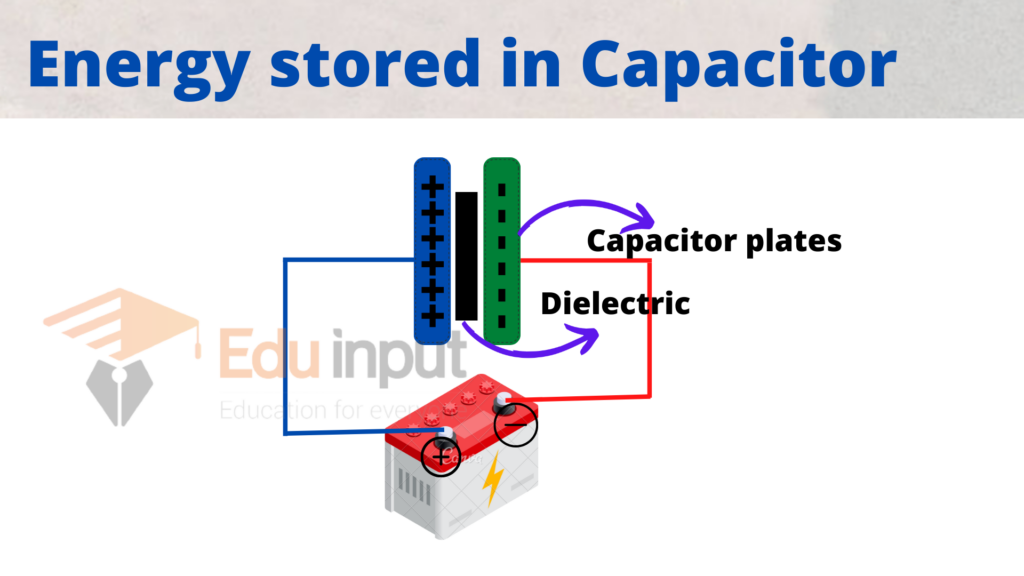
Thus the average potential difference is given by
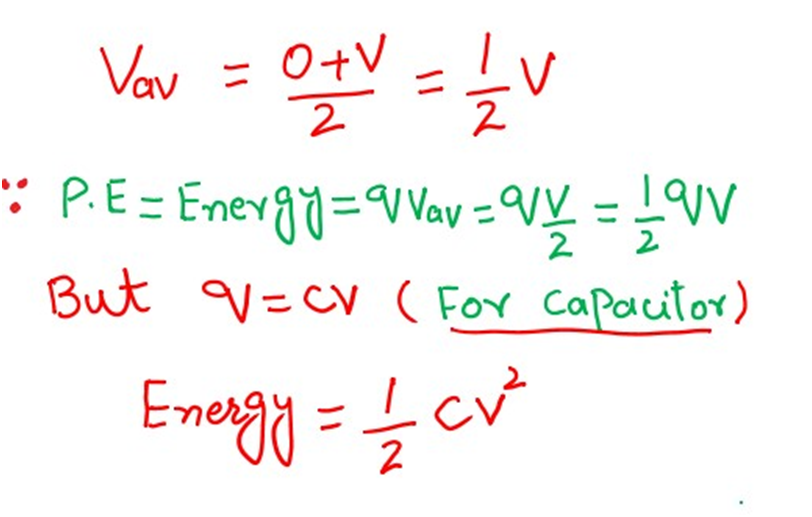
Energy stored in an electric field:
The energy per unit volume in the space between the plates of a parallel plate capacitor is called energy density.
It is possible that energy is being stored in an electric field between the plates rather than the potential energy of the charges on the plates. In such a case, we find electric field strength between the plates. Let E be the magnitude of the electric field and V is the potential difference and d be
the separation between plates, then we know that,
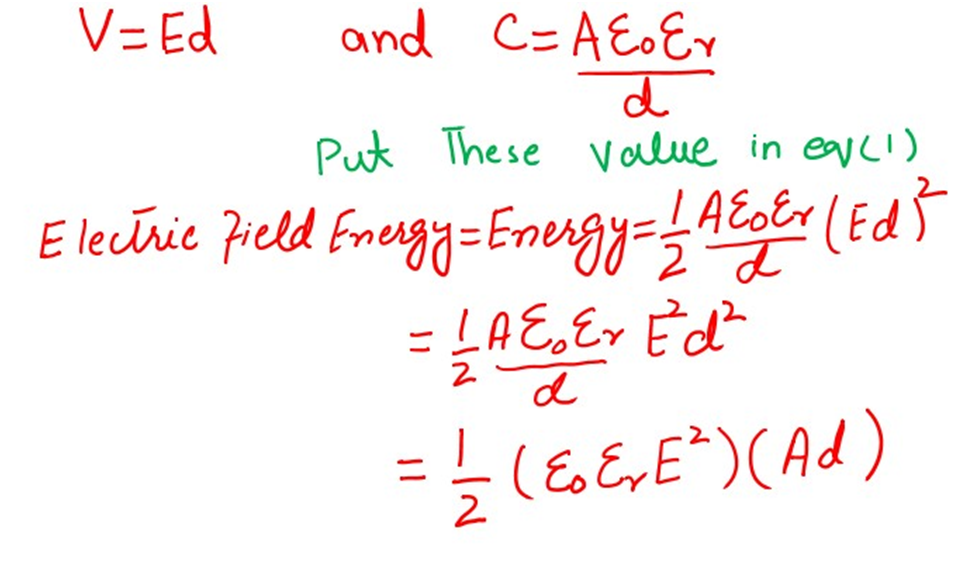
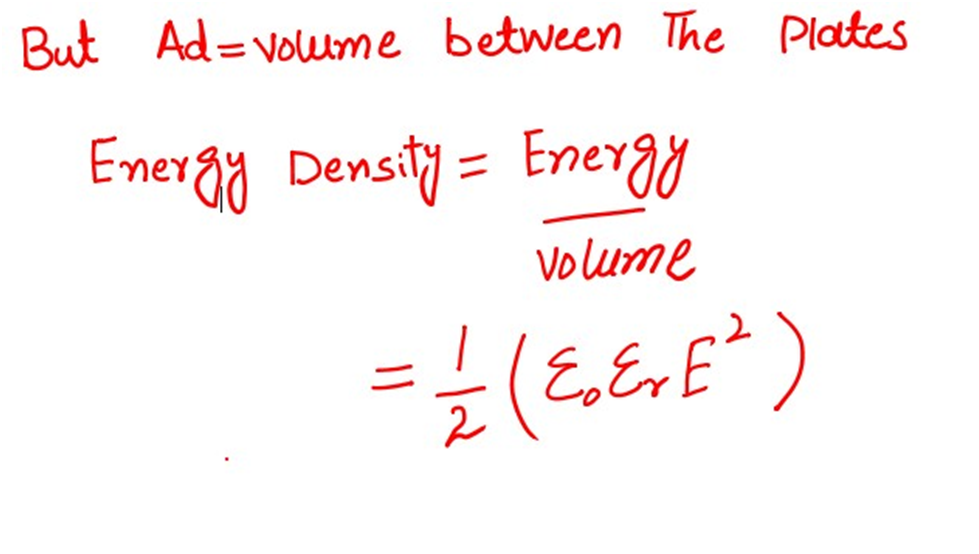
This equation is valid for any electric field strength.
Charging and Discharging a Capacitor
When a rising DC voltage is applied to a discharged capacitor, the capacitor draws a so-called “charging current” and “charges” it.
When this voltage drops, the capacitor begins to discharge in the opposite direction.
“A circuit which is the combination of a resistor and a capacitor is called RC circuit. Many electrical circuits consist of both resistors and capacitors.
Charging of a capacitor
When switch S is set at terminal A, the RC circuit is connected to the battery of voltage V. It starts charging the capacitor, through the resistor R.
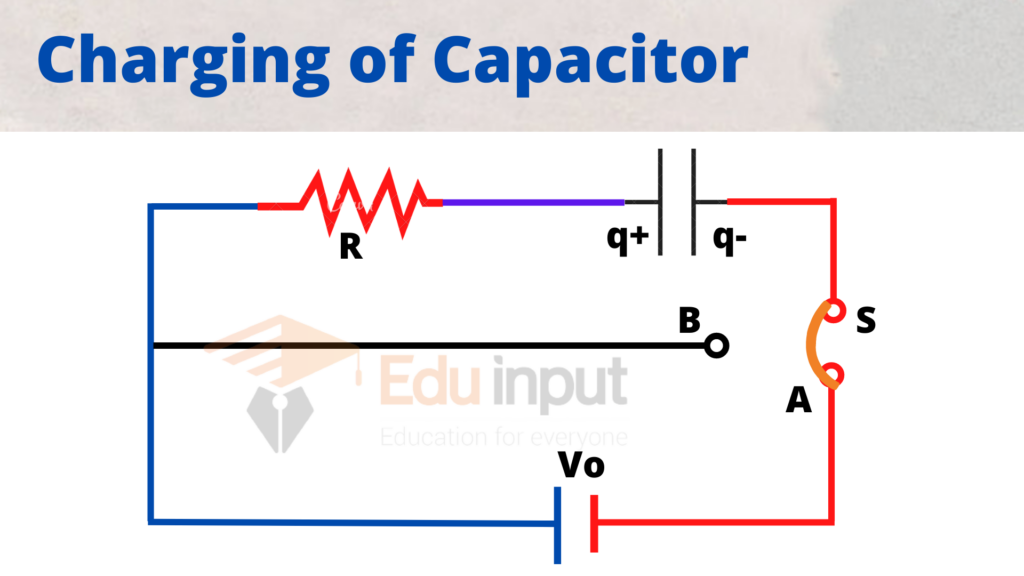
The capacitor is not charged immediately but it gradually attains the equilibrium value qo=CVo
The growth of charge with time for different resistances.
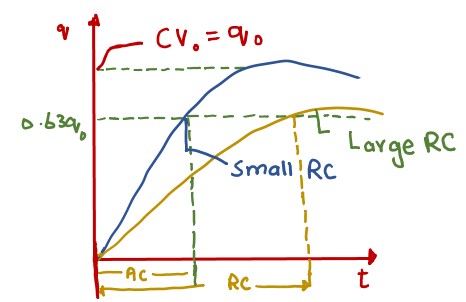
As shown in the graph, q=0 at t=0 and increases gradually with time till it reaches its equilibrium value qo=CVo.
The voltage V across the capacitor at any instant can be determined by dividing q by c as V=q/c.
The rate of charging and discharging of a capacitor depends upon the product of resistance R and capacitance C used in the circuit.
What is the Time Constant in the Capacitor?
The product RC is known as the “Time constant” and it is defined as, “The time required by the capacitor to deposit 0.63 times the equilibrium charge qo.
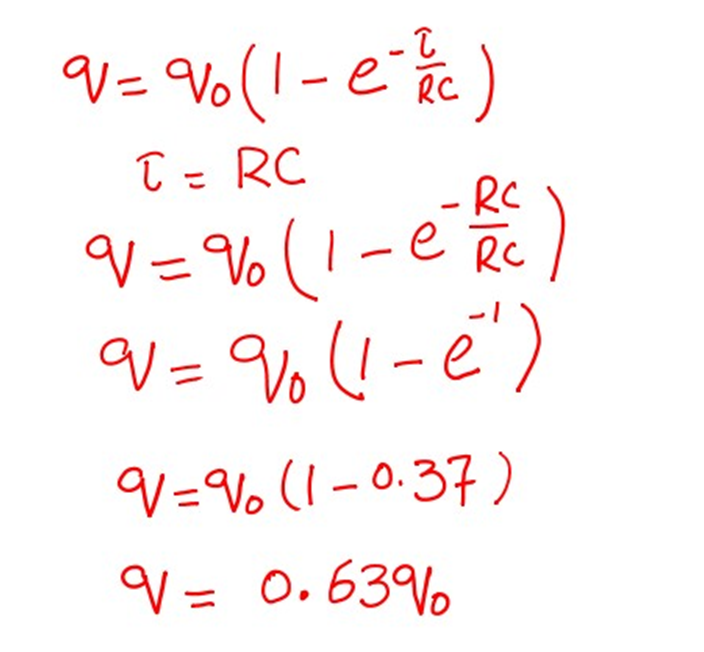
0.63qo is the charged deposit on the plate of capacitors in one RC time.
When the time constant is small, the charge attains its equilibrium value sooner.
Discharging Of Capacitor
When switch S is set at point B, the charge +q on the left plate flows anticlockwise through the resistance and neutralizes the charge -q on the right plate.
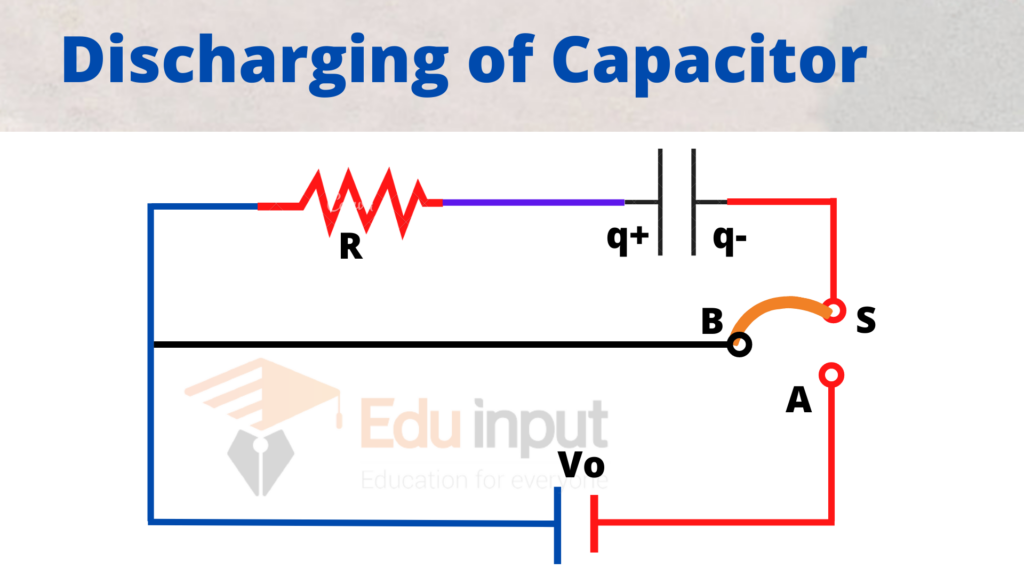
The graph shows that discharging begins at t=0 when q=CV and decreases gradually to zero. When the time constant RC is small, the more rapid the discharging.

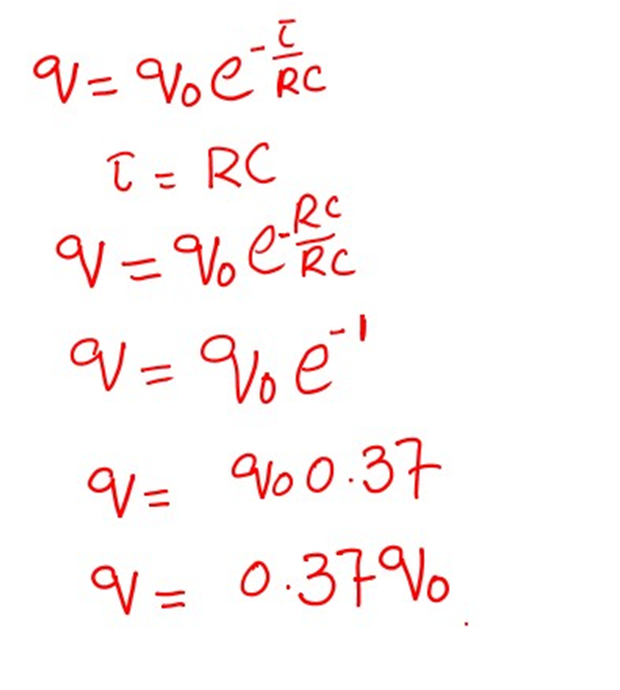
0.37qo is the charge left on the plate of the capacitor in one RC time.
Frequently Asked Questions-FAQs
What is the formula of energy stored in a capacitor?
The energy stored in a capacitor is calculated by the formula E=1/2CV2
What is the formula of energy stored in the capacitor?
The work that needs to be done to charge the capacitor begins with no charge on its plates. The space between the plates contains the electrical field where the energy is stored.
It is dependent on the amount of electrical charge on the plates and on the potential difference between the plates.
How much charge is stored in a capacitor?
Capacitors don’t have a store charge. Capacitors are able to store an amount of charge. The total charge (added up across both plates) is zero if one plate has -1 coulomb of the charge stored on it, and the other plate has 1 coulomb.




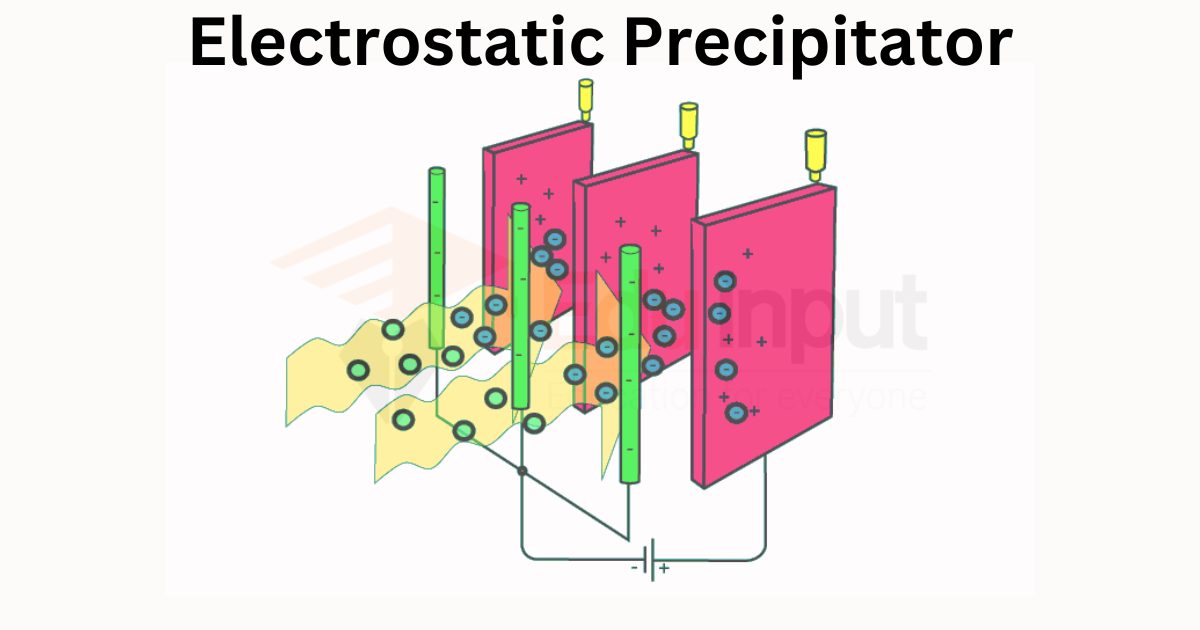


Leave a Reply